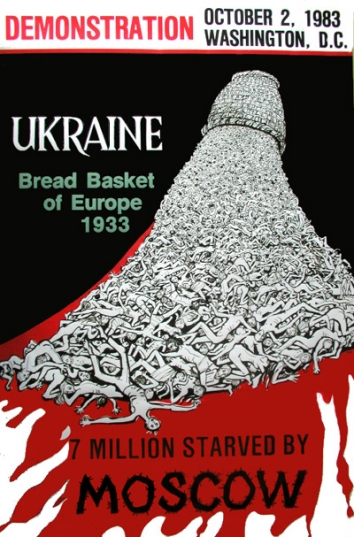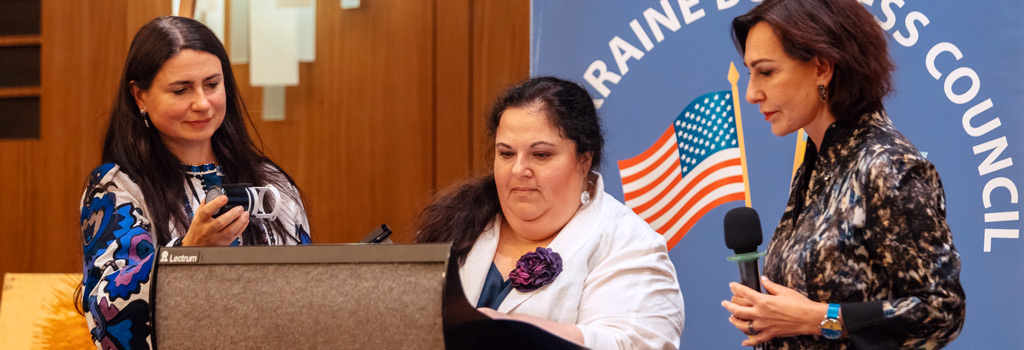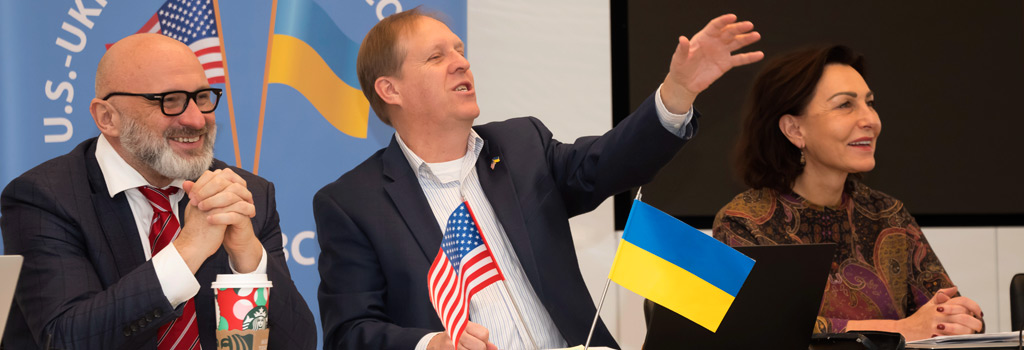Featured Galleries USUBC COLLECTION OF OVER 160 UKRAINE HISTORIC NEWS PHOTOGRAPHS 1918-1997
 Holodomor Posters
Holodomor Posters

New law on capital markets and organised commodities markets adopted: Part 1
 DLA PIPER, Kyiv, Ukriane,
DLA PIPER, Kyiv, Ukriane,
July 01, Wed, 2020
New law on capital markets and organised commodities markets adopted: Part 130 June 2020 | By Oleksandr Kurdydyk, Dmytro Pshenychniuk and Viktoriia Luganska On 19 June 2020, the Ukrainian Parliament adopted law (draft law No. 2284) aimed at creating a new design of financial markets in Ukraine and introducing sweeping new changes to regulation of financial instruments (the Law). The Law has also paved the way for a wide range of new financial instruments such as derivatives, green bonds, loan notes, and other structured finance products. In terms of harmonisation efforts, this Law is based on the key provisions and standards of the EU regulation (MiFID II, MiFIR, and EMIR). Broadly speaking, we have summarised main conceptual feature of new Law:
We further examine the above novelties in detail. The newsletter is divided into two parts. Part 1 considers new model of market infrastructure, client categorisation and market sounding. Part 2, which will appear in next days, will focus on new types of finance products and set out a more detailed overview of master documentation and close out netting. Importantly that the Law still awaits signature of the President. Once singed, it comes in effect on 1 July 2021, and some of its provisions relating to netting and certain insolvency matters will be enacted on the day after the Law is officially published. A new model of financial market infrastructureThe Law singles out three types of capital market: equity, derivative and money markets. In an attempt to align with MiFID and MiFIR, the Law re-structured organised capital markets, which now capture new kinds of trading venues: regulated market (RM), multilateral trading facilities (MTF) and organised trading facility (OTF). The Law also distinguishes organised capital market from over-the-counter markets and instruments.
An RM is defined in the Law as a multilateral system managed and operated by a market operator, which ensures organisational, technological, informational, legal and other conditions for bringing together third parties buying and selling interests in the assets admitted to trading on RMs. It also conducts systematic trading sessions in such assets and executes contracts on a centralised basis in accordance with non-discretionary rules. An MTF is a multilateral trading facility dealing with equity or derivatives on the basis of its non-discretionary rules. An OTF predominantly deals with non-equity financial instruments (bonds or derivatives) executing trades based on its discretionary rules. The market operator should be a regulated entity, and in order to carry on such activity requires a licence from the National Securities and Stock Market Commission (NSSMC). One of the novelties introduced by the Law is that a non-Ukrainian foreign entity can also apply for a market operator licence, subject to rules developed by the NSSMC. The NSSMC is vested with the authority to define and announce a list of organised markets operating within Ukraine on its official website. This should liberalise the financial market space, opening it to competition.
The Law implements requirements of MiFID II for date reporting services and data providers such as: APA (an approved publication arrangement handling the service of publishing trade reports on behalf of investment firms), CTP (a consolidated tape provider, collecting trade reports of specific financial instruments from regulated markets, MTFs, OTFs and APAs to combine them into a continuous electronic live data stream (price and volume data per financial instrument)), and ARM (an approved reporting mechanism giving reporting details of transactions to competent authorities on behalf of investment firms). Each of the above providers will need to be authorised by NSSMC.
The Law introduces such participants of the capital market as investment firms, which may carry out the following financial trading activities based on the relevant licence: (sub)broker activities, dealing, portfolio management, investment advice, underwriting, and placing of financial instrument on/without a firm commitment basis. Foreign investment firms will also be allowed to operate in Ukraine based on a relevant licence and subject to a code of conduct which should be developed by NSSMC.
The Law introduces the concept of a “Systemically Important Professional Participant of Capital and Regulated Markets” (SIPP). The NSSMC is given the authority to designate and regard market participants as SIPPs given their essential importance for and ability to affect the financial markets subject to one of the following criteria: level of financial inter-connectedness, possibility to substitute services of such entity with the services of another market participant, and/or volume of their operations.
The clearing model reflected in the Law ensures that all derivatives and financial transactions that are admitted to trading on RMs, so-called cleared trades, shall be mandatorily cleared via a central counterparty (CCP). We note that the CCP is generally a well-capitalised financial institution which takes on a bilateral credit risk. The requirements to the charter capital of CCP, reserves, risk assessment and mitigation technics, as well as default fund arrangements will be developed by the NSSMC. One of the novelties of the Law is that CCP will be entitled to carry out its activities either via accounts opened with the National Bank of Ukraine, or foreign banks subject to compliance with the requirements set forth by the National Bank of Ukraine to such foreign banks.
According to the Law, trade repositories should record and maintain all information on the executed derivative transactions and any transfers of derivatives. Any over-the-counter derivative trade shall be reported on by a counterparty to the trade repository within the term specified by the NSSCM upon its execution. A non-compliant counterparty will be fined if it fails to report to the trade repository. The information on trades pooled by the trade repository will be easily accessible for the Ukrainian central bank and regulatory authorities. A new client categorisationAccording to the Law, all clients are divided into two categories: (i) qualified, and (ii) non-qualified investors (clients). Depending on the nature of a given client and the outcomes of classification, different regulatory protections can be afforded. A qualified investor is deemed under the Law to be any client who has relevant knowledge, experience and awareness of capital market products to make an investment decision and assess the risk of an instrument or product and, therefore, is able to act without additional regulatory protection. The Law contains a non-exhaustive list of qualified investors, including the following:
In addition, the Law contemplates a special company-by-company test whereby any entity, including a foreign legal entity, may be treated as a qualified client upon the relevant request provided that it meets at least two certain criteria; for example, satisfies: (i) a size test constituting a balance standing to the credit of the bank account or securities in ownership for an amount (value) exceeding UAH500,000 (appr. EUR17,000); (ii) an objective test for frequency and systematic activity in trades (more than ten trades per a quarter in a product in question during the last year); and (iii) a capital markets experience test (at least one year). In contrast, a non-qualified investor is regarded by the Law as any client not recognised as a qualified investor. As mentioned above, there is a far more onerous code of business to be applied by an investment firm while servicing such non-qualified clients. Market soundingAmong key reforms in disclosure law, we would single out the market sounding provision, which is fully aligned with the Market Abuse Regulation (MAR) and will likely have a significant positive impact on all companies with traded financial instruments, securities and advisors. The provision purports to capture a wide range of financial products, including shares. The Law sets out the definition of a market sounding (which corresponds substantially to the same definition provided in the MAR) and permits the disclosure of insider information in the course of market soundings (accordingly, it does not constitute market abuse), provided that specified conditions are met. |
AuthorsFor more information, please contact: |
|
|||||||||||||||||














.jpg)





